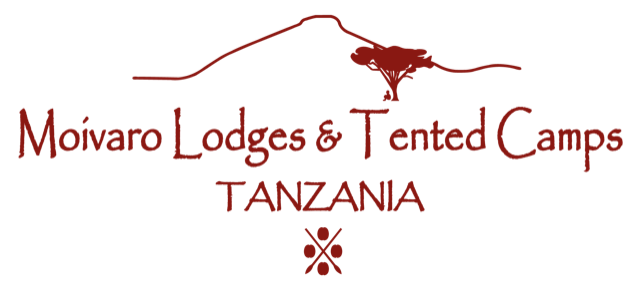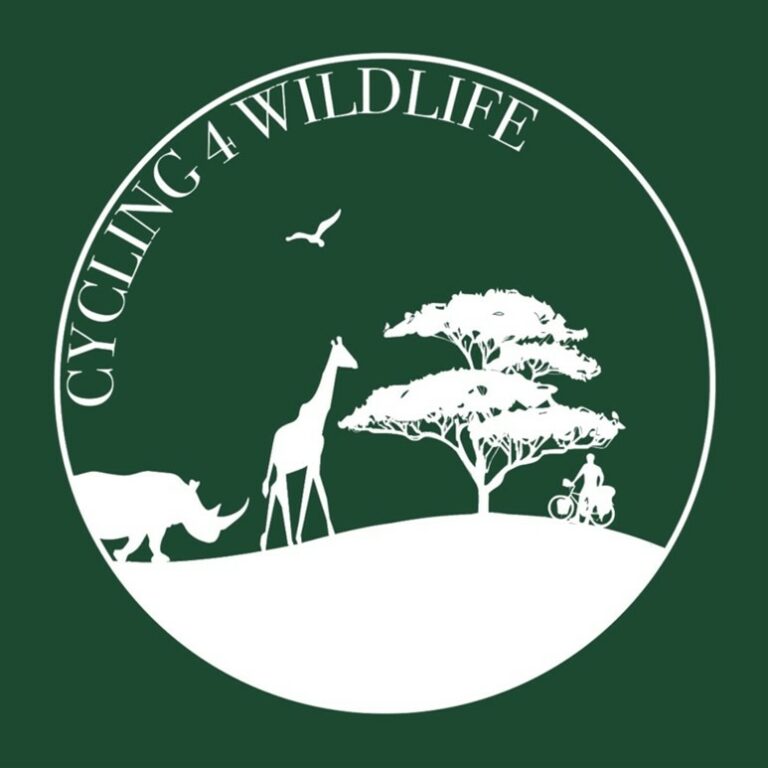After two days of cycling from Lake Kariba, we were back in Lusaka on August 10. From Lusaka it was only a two-day journey to reach Kafue, which meant we had to find a place to stay the night. Since there weren’t any hostels on the road, we expected to sleep out in our tents. We had a rule to stop cycling about half an hour before darkness, so as to give ourselves enough time to pitch our tents and find some firewood. Just around the time when we started scanning for a suitable spot, we got pulled over by an Arab-looking man wearing a djellaba standing next to his car on the side of the road. As we stopped, we feared this was another case of someone who wanted a picture with us (this happened often). But to our surprise, this man was not interested in a picture. Instead, he asked us where we were planning on staying the night. He and his brother owned a game farm, he told us, where they were happy to accommodate us. Of course we accepted his offer, and a 17-kilometre ride later we arrived at the farm.
The farm was only 22 hectares large, but in it were kudu, wildebeest, and zebras, as well as a whole collection of exotic birds, including over a dozen species of duck and a Lady Amherst’s pheasant. The owners of the place were two brothers named Mohammed and Zahir. The sons of immigrants from India, the brothers had started a company raising and slaughtering chickens, which had since evolved into the largest chicken abattoir in Zambia. Having spent their childhood visiting Zambia’s many national parks, the brothers had always dreamt of owning their own game farm, and now that their chicken abattoir was putting out thousands of chickens every day, they had managed to turn their dream into reality. After our tour we lit a small fire, and the brothers arranged for a chicken to be slaughtered. Muslims or not, they even helped us get some beers, and a moment later we were sitting next to the fire, a beer in hand, braaiing the freshest possible chicken. Though the cold meant we didn’t sleep much that night, we now all reflect on this night as one of our favourites of the entire journey.
The next morning, after the standard ritual that involved a pot of coffee, a loaf of bread and an obscene amount of peanut butter, we were back on the road. 150 kilometres later, just as it was getting dark, we arrived at Kafue’s east gate. What followed was a long drive into the heart of this massive park. When we finally arrived at our camp, we were welcomed by Andrea, the F&R manager and wife of Craig, the park manager. After showing us our tents, she told us she had just come back from Lake Itezhi-Tezhi, where earlier that day 41 buffalo calves had died in a mysterious mass drowning event. The Kafue staff had worked hard to retrieve some of the carcasses, but what for we did not know.
We found out the next morning. Andrea had told us there wasn’t really a programme, allowing us the luxury of sleeping in. For me, though, this was the perfect opportunity to enjoy a rare moment of solitude. I woke up around 6 and made myself a cup of coffee, which I enjoyed on a wooden platform that overlooked the tranquil Kafue River. However, the serenity of the moment was suddenly interrupted when a Land Cruiser filled with buffalo carcasses appeared. Out of the driver’s seat stepped a skinny man with the appearance of an endurance athlete, who introduced himself as Craig. Seeing me stare at his peculiar cargo, Craig explained they were going to feed the carcasses to the orphaned lion cubs that were kept in a boma.[1]
The lions he was referring to were seven cubs whose mothers had been killed in poacher’s snares. Normally when an animal dies, nature would be left to run its course. But because these lionesses had been killed by poachers, Craig explained, the management had felt compelled to ensure the cubs’ survival before releasing them back into the wild once they could fend for themselves (for more info, click this link). Long story short, Craig had a vehicle filled with buffalo carcasses and invited us to assist in feeding the cubs.
Without hesitation, I woke up the rest of the team and five minutes later we were en route to the lion boma, where an ingenious design had been constructed that prevented the lions form seeing the vehicle when they feed, ensuring that they don’t come to associate cars with food. After watching the year-old cubs devour three poor buffaloes in record time, we headed back to camp.
At some point, a few hours after breakfast, a towering column of smoke emerged a few kilometres to the north of us. Moments later, Craig appeared. He told us what we had expected: a fire had started to spread and was rapidly advancing toward the lion boma. Fearing that the smoke might suffocate the lions, Craig asked us to join him there and, if possible, help him extinguish the fire.
As we made our way to the boma, we briefly passed the park headquarters, where this already eventful day took a surreal turn. Right next to the law enforcement building was the evidence room, usually reserved for storing evidence from illegal activities, such as snares and firearms. However, now it was the temporary storage for the buffalo carcasses meant for the lions’ upcoming meals. Earlier that morning, two rangers had come here to take out the carcasses for the lions’ breakfast, and had the scare of their lives when they found an old, skinny leopard in the midst of a feast. Upon seeing the rangers, the leopard had swiftly escaped, but Craig feared it would come back. To investigate, we drove up to the evidence room and, sure enough, his fears were confirmed: for the briefest moment we caught a glimpse of the predator, but the instant it noticed us it disappeared into the foliage once more.
Given that older and weaker leopards tend to become more opportunistic and hence more dangerous to humans, Craig was deeply concerned about this particular individual lurking around HQ. Only two weeks prior, he and Andrea had tragically lost their dog, still only a puppy, to a leopard’s claws. Now, it seemed highly likely that the same leopard was hiding mere metres away from us. Despite Craig’s determination to set a trap for the old leopard, our immediate focus remained on the lions and the rapidly approaching fire. Thus, we continued toward the boma and left the leopard alone, at least for now.
When we arrived at the lion boma, the fire had already spiralled out of control. Equipped with only a branch to douse the flames, we quickly realized our attempts were futile. At times, the situation was quite dangerous – we’d approach a small fire to beat out completely with our branches, when a sudden gust of wind would revive the fire like a splash of petrol. Eventually, we had to concede, though fortunately, the fire break did its work, ensuring the safety of the lions. Then we just stood there, our hands blistered, watching in awe as the flames devoured an area the size of a football every minute.
After failing to control the fire but making sure the lions were safe, we started driving upwind, toward the source of the fire, hoping to find the people responsible for it. As he drove, Craig explained that these fires often start unintentionally when staff members go fishing and light fires to deter animals. The dry bush, coupled with the slightest gust of wind, can quickly turn a small fire into a major conflagration. To make matters worse, decades of mismanagement and excessive poaching have decimated the park’s antelope population, leaving much of the grass ungrazed as the dry season approaches. This creates a massive accumulation of fuel, which readily ignites at just the slightest spark. As a result, an alarming 75 per cent of Kafue’s land surface is consumed by flames each year. Though fire is a natural and vital component of the savannah ecosystem, this frequency far exceeds the natural balance. In a natural situation, a section of bush should burn once every three years or so. But however destructive these fires might be, nature always bounces back. Indeed, as we drove back to camp through a scorched landscape, the first signs of rejuvenation were already emerging. In the sky above, bee-eaters and drongos were feasting on the thousands of insects left homeless by the fire, serving as a testament to nature’s enduring resilience.
When we returned to HQ, it was time to set a trap to catch the old and sick leopard. In the door opening of the evidence room, we set the trap – a cage with a sliding door at one end, which would fall shut when a hook inside the cage was triggered. Next we baited the hook with a tempting piece of buffalo liver, which we were sure would attract a hungry leopard. After setting the trap, we headed back to our camp, where we enjoyed dinner while eagerly awaiting a message from Craig and Andrea.
A few hours later, we received a message that the leopard was caught. Apparently, it was a female, and indeed she looked very unhealthy. When we arrived at the cage, the old lady was nervously pacing in circles inside her small enclosure. Standing so close to this magnificent beast was a humbling experience. The leopard and I both knew that had we not cheated by trapping her, she would rip my face apart in a matter of a second. Now and then she would growl at us, as though infuriated by our cowardly tactics.
Even though she looked old and sick, it took more than an hour for her to succumb to the tranquilizing drug, though this delay may also have been influenced by Craig, who, according to Andrea, built a somewhat questionable reputation as ‘a man who likes to underdose big cats.’ Once the old lady was finally asleep, the veterinarians examined her to understand the cause of her weak state. It immediately became clear when they opened her mouth – one of her canines had worn off completely, leaving her unable to tear off flesh. This also explained why she kept on coming back to the evidence room; even in a shed full of dead buffaloes, she had not been able to satisfy her hunger. To prevent the old female from eating another puppy, or worse, it was decided to relocate her to an area far away from headquarters, where she would likely die soon due to her dental issues.
After the old leopard was driven away in the back of a Land Cruiser, we returned to camp. With a glass of whiskey in hand, we sat around a cosy fire and reflected on what had no doubt been one of the strangest days of our lives. However, just when we thought the surprises were over, Craig astonished us once more by offering one of us to join on an aerial anti-poaching patrol the next morning. Following another tense game of toepen, Huib emerged as the winner and took off the next morning in a small Savannah aircraft, along with pilot Brad. The rest of us were incredibly jealous, until we were told that all four of us would be granted this amazing opportunity. That afternoon, it was my turn. I would be flying with Chitambe, a pilot from Zambia. Chitambe was wearing a pair of classic Ray-Ban aviators when he picked me up on his motorcycle. ‘This man must have seen Top Gun more than once,’ I couldn’t help but think.
Once settled inside the cockpit of the small aircraft, I asked Chitambe about his early life and career. His accent, which sounded American but wasn’t quite, indicated a private education, which no doubt helped when he applied for a job at the Zambian Air Force. However, since the Zambian AF doesn’t see much action, Chitambe spent most of his military career flying around VIPs, including several successive presidents and, notably, Ursula von der Leyen. After a while, though, the routine nature of flying high-profile politicians left him wanting to utilize his skills where they were most needed. Subsequently, he took leave and joined African Parks as a pilot for anti-poaching patrols.
Those patrols strongly resemble the flight pattern of a raptor riding a thermal: we’d navigate to certain place of interest, such a nice shady tree or a crossroads. From there, we started making ever-widening circles while gaining altitude. In this fashion, we hoped to spot signs of poachers from high up in the sky, which we would then communicated to HQ via VHF communication. Unfortunately, or perhaps fortunately, we did not see any. With no immediate poaching threats to address, Chitambe decided to turn the patrol into a scenic flight. Our journey led us to lake Itezhi-Tezhi, and from there, we traced the mighty Kafue River, with its magnificent rapids, all the way back to the air strip.
The flight was wonderful but also sobering. From the sky, the signs of man were omnipresent, even deep into the wilderness. On the shore of Lake Itezhi-Tezhi, fisherman camps lay littered with plastic. Meanwhile, the game management areas (GMAs) adjacent to the park, intended as unspoilt buffer zones where controlled hunting is allowed, lay exposed, their once-forested landscapes now cleared for cultivation. In the absence of a fence, this encroachment on its edge means pressure on the park itself will only increase further.
Spanning 2.4 million hectares, Kafue is grand in every conceivable way. It is grand in the scale of its challenges and, undoubtedly, in its vast possibilities. We were reminded of its grandeur once more as we cycled through the park on our way out, an endless journey on which we were accompanied by a persistent cloud of tsetse flies. Just a few kilometres before reaching the west gate we passed a large buffalo carcass. When we exited the park, the ranger on duty asked: ‘Are you guys mad, cycling here? Did you not see that massive lion? It was feeding on that buffalo lying next to the road just now!’
I guess we almost bid farewell to this park with a grand finale, but I’m relieved that didn’t happen. Ahead of us lay something which certainly wasn’t grand – just 340 kilometres of tarmac between us and Liuwa Plain National Park, the final destination of our grand tour.
[1] the word boma has an interesting history. Today it is used to refer to a community or livestock enclosure, much like kraal in Afrikaans. A popular myth is that the word has its roots in colonial times, when it served as an acronym for British Officers Mess Area (the heart of a military enclosure, I guess?). However, the real origin of the word seems to lie in the Persian word buum, which means something like ‘safe haven’. Through Persian traders the word found its way into Swahili, the trade language of East Africa, from where it ended up in 21st century conservation jargon.

















